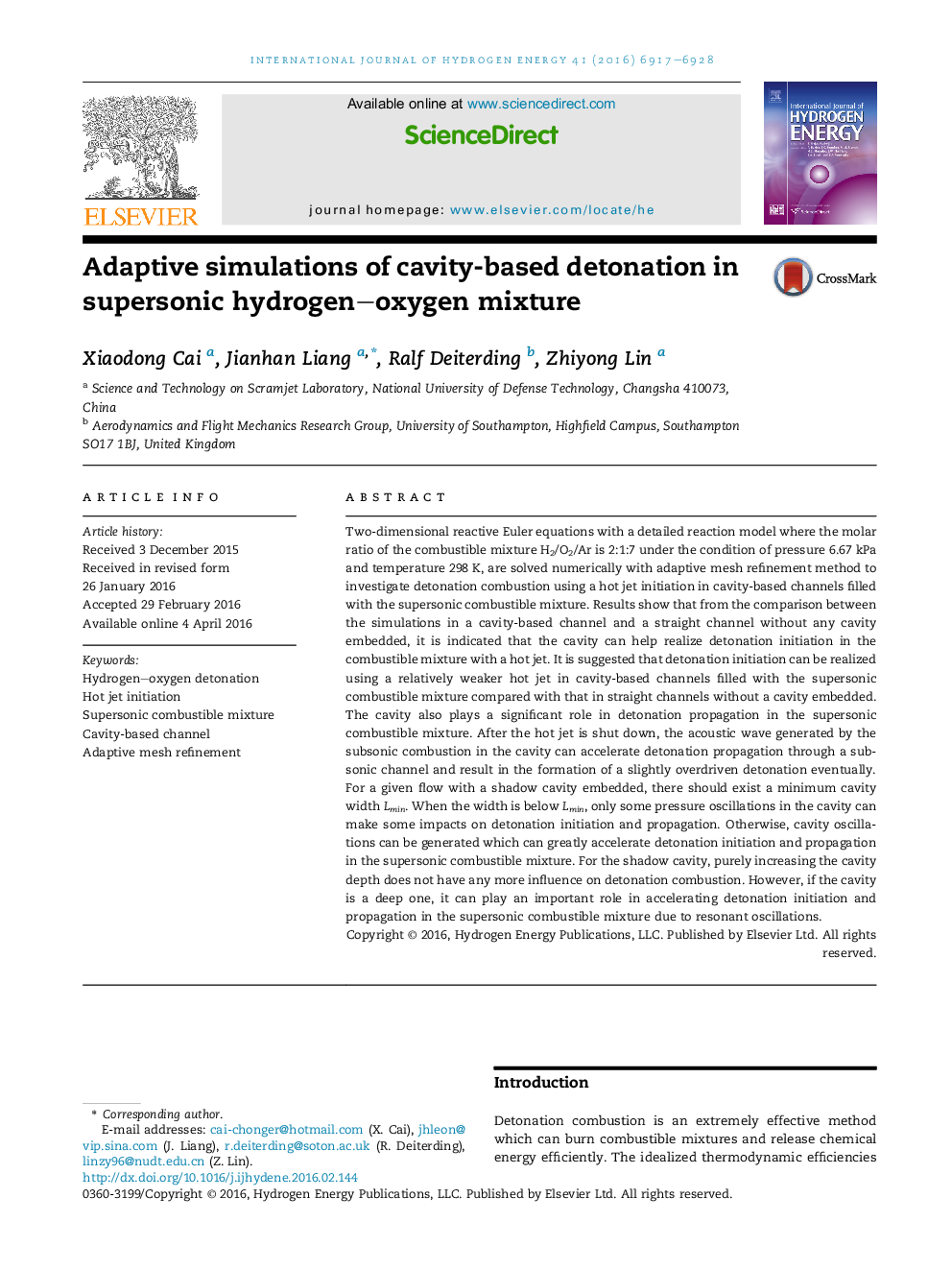| Article ID | Journal | Published Year | Pages | File Type |
|---|---|---|---|---|
| 1270697 | International Journal of Hydrogen Energy | 2016 | 12 Pages |
•Adaptive two-dimensional high-resolution detonation simulations are conducted in cavity-based channels with a detailed reaction model in the supersoic hydrogen–oxygen mixture.•By comparing between a cavity-based channel and a straight channel without the cavity embedded, it shows that the cavity can help to realize detonation initiation in the supersonic combustible mixture.•After the shutdown of the hot jet, the acoustic wave in the cavity can accelerate detonation propagation and result in the formation of a slightly overdriven detonation.•For a given flow with a shadow cavity embedded, there should exist a minimum width Lmin above which cavity oscillations can be generated.•For a shadow cavity, purely increasing the cavity depth does not have any more influence on detonation. However, if the cavity is a deep one it can play an important role in accelerating detonation due to resonant oscillations.
Two-dimensional reactive Euler equations with a detailed reaction model where the molar ratio of the combustible mixture H2/O2/Ar is 2:1:7 under the condition of pressure 6.67 kPa and temperature 298 K, are solved numerically with adaptive mesh refinement method to investigate detonation combustion using a hot jet initiation in cavity-based channels filled with the supersonic combustible mixture. Results show that from the comparison between the simulations in a cavity-based channel and a straight channel without any cavity embedded, it is indicated that the cavity can help realize detonation initiation in the combustible mixture with a hot jet. It is suggested that detonation initiation can be realized using a relatively weaker hot jet in cavity-based channels filled with the supersonic combustible mixture compared with that in straight channels without a cavity embedded. The cavity also plays a significant role in detonation propagation in the supersonic combustible mixture. After the hot jet is shut down, the acoustic wave generated by the subsonic combustion in the cavity can accelerate detonation propagation through a subsonic channel and result in the formation of a slightly overdriven detonation eventually. For a given flow with a shadow cavity embedded, there should exist a minimum cavity width Lmin. When the width is below Lmin, only some pressure oscillations in the cavity can make some impacts on detonation initiation and propagation. Otherwise, cavity oscillations can be generated which can greatly accelerate detonation initiation and propagation in the supersonic combustible mixture. For the shadow cavity, purely increasing the cavity depth does not have any more influence on detonation combustion. However, if the cavity is a deep one, it can play an important role in accelerating detonation initiation and propagation in the supersonic combustible mixture due to resonant oscillations.
